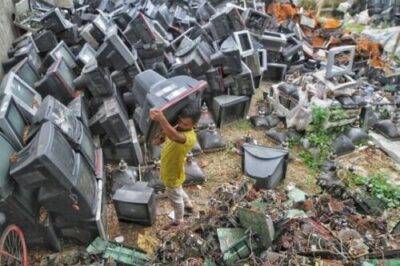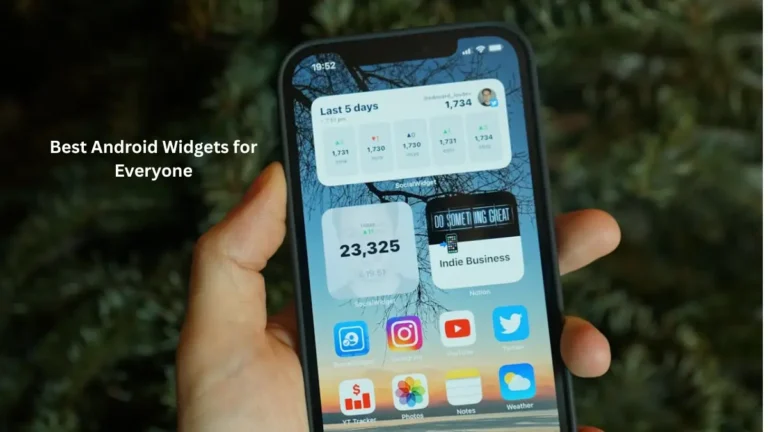E-Waste, Millennials and Gen-Z are highly environmentally-conscious consumer demographics. They are the people pushing brands and businesses into adopting business practices that are healthier for the environment and everyone in it.
Yet, according to a survey, 60% of them do not know what e-waste means. Most of them throw away their old electronic devices when they upgrade or when the device shows malfunction.
The fact that you are here shows that you are aware of the term ‘e-waste’. But do you know what it means and what’s at stake when you don’t properly recycle your discarded electronic devices?
Let’s see.
What is e-waste?
In a nutshell, e-waste is any discarded electronic device that uses a battery or a plug. Old TVs, mobile phones, computers, USBs, or even a remote control that you throw in the bun when it stops working or when you upgrade, are examples of e-waste.
According to the Global E-waste Monitor 2020 report, 53.6 million metric tons of e-waste were generated globally in 2019. By 2030, this waste is going to increase to 74 million metric tons.
And this should concern you. Why? E-waste is one of the the fastest growing toxic waste streams in America, and a huge amount of this waste goes into landfills on the regular. Toxic materials present in our electronic devices include lead, mercury, cadmium, and different flame retardants. When these materials seep through our earth and go into our water and vegetation, we may end up with food and water resources that are dangerous to consume.
According to Fortune Business Insights™, The global recycled plastic market size was USD 37.8 billion in 2018 is projected to reach USD 72.6 billion by 2026, exhibiting a CAGR of 8.5% during the forecast period.
On the other hand, though, e-waste also contains a staggering amount of precious metals such as gold, silver, palladium, and copper, etc. According to some estimates, the amount of gold and silver that can be reclaimed from e-waste that’s currently in landfills is more than $21 billion.
As you can see, we need to start taking e-waste recycling seriously because with the increasing human population, the damage done to the environment has also increased. We are not using our resources responsibly and thus we are losing them.
So, what are some of the environment-friendly ways we can get rid of our unwanted electronics?
1. Ride the Cloud
Cloud computing is one of the most effective ways you can reduce your dependence on a zillion different devices, servers, and circuit boards to get your work done. Using cloud computing, you store all your data on third-party servers and manage and store your data through those servers.
Some of the famous cloud computing options available in the market right now include Google and Amazon Web Services.
In addition to being a green solution to e-waste, cloud computing is also a cost-saving measure. It allows you to continue your business without investing in a separate IT department, reducing the e-waste even further. Plus, the ability to work remotely using cloud infrastructure is also great for the environment.
2. Use E-Waste Recycling Companies
While the consumer demographics may not know what e-waste is, there are huge businesses that are dealing in the e-waste recycling market. These companies allow you to sell them your devices and other electronic material that you do not want to use any longer. Common items that you can sell include TV, computer, monitor, laptops, mobile phones, and such.
Some of these companies will buy back whatever electronics you have to sell, no matter the kind of device. Several other companies are more specialized. Cash for Used Laptop, for example, only deals in computers and laptops.
One of the major reasons people don’t recycle their e-waste or sell their used devices is concerns about data safety. To alleviate these concerns, use a data destruction company that will remove all your data from your device before you sell your electronics.
3. E-Waste Recycling Policy
An effective and sustainable way we can make sure that our e-waste is kept at a minimum is through widespread implementations of e-waste recycling policies. The business world needs to come together and create processes and operations that support e-waste recycling. Such a policy will also include the safe erasing of sensitive data to ensure no recycling occurs in data loss.
Such a recycling policy will also encourage employees to use their devices for as long as possible, consume technologies that do not add to the waste and create strict measures that ensure that all e-waste is recycled and disposed of responsibly.
4. Trade-In Programs
A trade-in program is one where you hand over your old device and get some kind of discount or cash-back on the purchase of a new one. Many businesses that use a lot of electronics around the office have started implementing trade-in policies where employees must have to hand over their old devices to get a new one.
These trade-in programs ensure that IT costs are kept at a minimum, e-waste is less, much of it is recycled, and in a way that is not harmful to the environment.
Manufacturers and retailers that have extensive trade-in policies in place include HP, Best Buy, LG, Samsung, and many others. The EPA has a list ready of electronic manufacturers and suppliers who offer trade-ins. Before you decide to throw away your old iPhone in the bin the next time, make sure to consult this list first.
5. Donate
Another great way to get the maximum life out of your electronic devices is to ensure that it is used for as long as it’s working. This means, donating your devices to charities less-privileged people can access these new technologies and carry on towards progress.
Before you donate, though, make sure that your device isn’t damaged or too old where most of the latest software may be incompatible with the device.
Some easy ways to donate your pre-loved electronic devices is to give them to local schools or libraries, non-profit organizations, and community centers, etc.
In Short…
There are several different ways to incorporate environmentally friendly ways to get rid of your electronic waste. A shift in understanding that can help the cause the most is to realize that a large part of our desire to upgrade is to enjoy a very small amount of technological improvement. If all of us refuse to jump at every chance of gadget upgrades, we may be helping the planet more than any recycling ever could.




